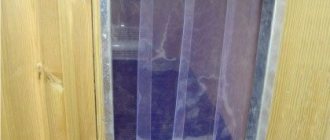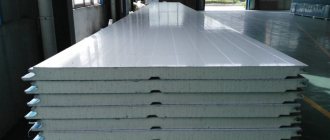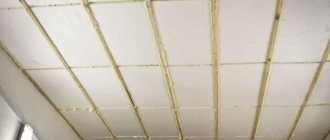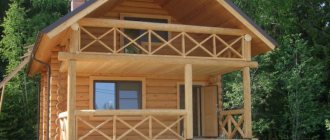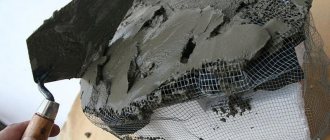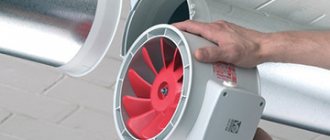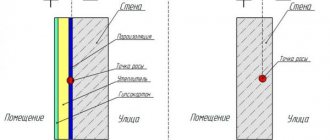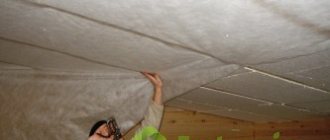If a pet lives in the yard all year round, it needs a warm and cozy home that provides protection from any bad weather, cold and slush. The dog should have the opportunity to fully relax in his personal space, and also to survey his possessions from time to time, protecting them from outside encroachments.
Insulated dog kennel
Thermal insulation options
The thickness of the insulation should be 3-5 cm. Before insulating a dog house, you need to decide which means are most applicable to specific structures.
Sawdust is an environmentally friendly material, but over time it settles and insects infest it.
Polystyrene foam is devoid of these disadvantages and is durable, but if it catches fire it becomes harmful. Plus, it's airtight. This insulation can be used if the manhole or cracks under the roof are able to sufficiently ventilate the room without creating an accumulation of water vapor. It is better to place the material in the walls to insulate the walls and roof and change it periodically. Plates are used with a thickness of 50-100 mm.
Penoplex in the form of plates does not allow moisture to pass through, perfectly protects against freezing, but requires sealing the seams using additional material.
Extruded polystyrene foam (technoplex) can be used as insulation for the walls, floor and roof of the booth.
Reference! Technoplex has advantages in thermal conductivity, moisture resistance, and durability compared to other foam plastics.
Formaldehyde-free, shrink- and rodent-resistant. Inexpensive rolled material such as floor underlay, isolon, synthetic padding can be used by strengthening them with a stapler and staples, and sewing a lath or lining on top. This material is used for the ceiling and roof of the kennel.
Liquid insulation in cylinders is a foam that hardens after application. A layer of no more than 5 cm is applied and requires mandatory lining. Resistant to wear, steam and moisture, the material has a long service life. Optimally used in structures made of double-layer walls.
Important! No means of insulation can sufficiently protect a pet in severe frosts of 25-30 degrees with winds. In such situations, the dog must be kept at home.
Bottom and floor covering
At the very beginning, it is worth taking care of insulating the floors and protecting the bottom of the structure. To do this, you need to turn the booth upside down. After this, you need to clean the wood from debris and treat the surface with a special antiseptic that will help protect the wood from destruction. Then you need to cover the bottom with roofing felt. At this point, the external protection of the floor covering is considered complete.
After this, the frame is returned to its original position and interior decoration begins. A waterproofing film is laid on the floor; you can use the same roofing material for this. During installation, it should be taken into account that the material should be laid with a slight overlap, in this case you can avoid the appearance of gaps and cracks that cause drafts. A mounting stapler can be used as a fastener.
The final floor is assembled last; it can be made from any old boards, plywood or OSB boards. After this, you should begin to add additional insulation, which will protect the kennel from the cold in winter.
Insulation is done in the place where the frame will be installed. To do this, you need to dig a hole 20-30 cm deep. A layer of expanded clay or gravel is poured into it, creating a kind of pillow, a sheet of roofing felt is laid on top, and then a booth is installed. This design will protect the kennel from possible freezing of the floor or moisture flowing inside.
Mineral wool is often used to insulate dog houses.
Rules for insulating a kennel
The winter hut has external and internal lining; the walls, floor and roof must be insulated. The optimal material for the room is wood, which is not harmful to the dog’s health, retains heat well in cold weather and provides coolness in hot weather. Plywood, OSB and fiberboard are thin in thickness and emit toxic substances, so this material is best used for cladding facades.

Wooden dog house
Insulation is carried out according to the following principle: an insulator is laid on the surface, then insulation and insulation again, then they are hammered on top with boards. If the walls are two-layer, then insulation is greatly simplified; it is possible to use a wide variety of insulation.
Additional Information! Chipboard is a particle board obtained by hot pressing of wood particles with a non-mineral binder. OSB is a multilayer sheet consisting of wood chips glued with resin, synthetic wax, and boric acid.
All walls of the kennel must be as strong as possible, the opening must be optimal in size, and have a threshold so that internal heat is retained. The place where the booth will be located must be protected from bright sun, wind, and dry. The body is placed on legs and stands so that it does not get wet from contact with the ground.
Hay and straw
If your four-legged friend lives in outdoor conditions, then it is highly undesirable for him to use hay or straw as bedding. There is a high chance that your pet will become infected with parasites such as fleas and ticks. In addition, all organic litter is characterized by the presence of enterobacteria: intestinal bacteria, salmonella. Also in straw and hay there are intestinal eels, which cause a wide variety of diseases in dogs. Another significant disadvantage of these materials is that they cannot be disinfected.
However, despite all the dangers and warnings, many owners like to use hay and straw as bedding. They motivate this by the fact that these materials are environmentally friendly, have a pleasant smell and retain heat well.
To prepare hay for bedding, care must be taken not to overdry it. It must be shaken periodically to prevent the hay from becoming rotten. To prevent infection by parasites, it is necessary to regularly, every week, make new bedding with the addition of herbs that have antiparasitic properties: thyme, sage, wormwood. The litter must be shaken every day.
To prepare straw bedding, it is best to use plants with a rigid stem (rye, wheat, reeds). Oat straw is definitely not suitable for this purpose, as it tends to crumble very much.
How to insulate a dog house using electricity
This type of insulation will save the kennel from dampness, mold, condensation, and ice deposits. Wire insulation is important for your dog's safety. In addition, they must be protected from moisture, the sources of which may be snow from the dog’s paws or blown in from outside, rain.
The following are used as electric heating:
- Heaters made of panels that heat the air up to 50 degrees. They come in different sizes, about 20 mm thick, and the animal can lean against the panels without any danger.
- As an electric heated floor, you can use infrared film, supplying electricity to which in cold weather allows you to heat them up to 60 degrees and save electricity consumption.
- You can make heating yourself from an asbestos-cement pipe and cable, ensuring safety precautions for your pet. In this case, it is better to use a self-regulating two-core cable.
Can heaters be used?
Many breeders, faced with the need to insulate a dog’s home, are interested in the issue of heating the kennel. Heating can be provided if desired; moreover, you can even lay a heated mat on the floor. Of course, a heated mat or heated booth will be the best option, as no insulation can compare with this. Moreover, heating the home will help ensure dryness inside.
Today you can find several types of heaters on sale:

Recommend: Toxoplasmosis in dogs
Insulation with mineral wool
This is an environmentally friendly option, but mineral wool loses its thermal insulation qualities after getting wet. Its fibers are unsafe for the pet’s mucous membranes, therefore, mineral wool insulation must be insulated.
Attention! The phenol-formaldehyde resin used in the manufacture of mineral wool can cause serious allergies and irritation of the dog's nose, eyes and larynx.
First, an insulating film is attached to the insulated surface of the kennel using staplers, then mineral wool and a second layer of insulation. The outside is covered with plywood and clapboard.
Dog bed
For bedding you can use:
- An armful of straw or hay. The disadvantage of such bedding is the possible infection of the animal with ticks. To avoid this, add wormwood or thyme to the litter.
- Large (about 10 cm) sawdust from coniferous trees. Sawdust absorbs moisture, and its smell repels fleas well.
- A rug or mattress with a removable cover.
- A special mat made of moisture-resistant fabric or PVC film with heating.
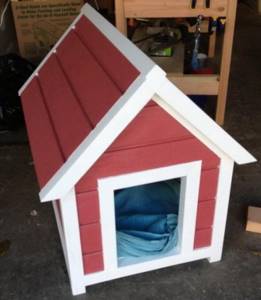
The litter needs to be changed once a month. Wash and dry the rug or cover.
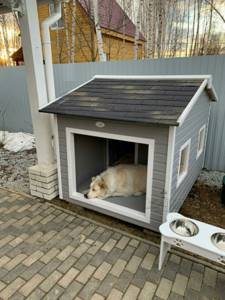
Drawings of a winter kennel and a warm enclosure for a dog
An enclosure allows the pet to have its own area for resting and walking, allowing it to be isolated from strangers and animals. The owner can walk the dog outside his territory whenever possible. Having an outdoor area of the enclosure in the fresh air is an excellent option for a dog’s useful time.

Approximate diagram of an enclosure for a dog
The drawing of the booth is made taking into account the size of the dog - small breed, medium size or large. The height will be equal to the height of the dog with its head raised, you can increase it by 10-15 centimeters, taking into account the bedding, for a possible increase in the pet’s height. The depth will be equal to the length of the dog lying with its paws outstretched, increased by 10-15 cm. To calculate the parameters of the hole, measure the height of the pet at the withers and the width of the chest, add 5 centimeters for free movement.
The vestibule in front of the sleeping compartment is made according to arbitrary dimensions. Instead of a vestibule, you can build an open compartment so that the dog can freely observe the surroundings.
Below are approximate calculations for the size of a warm kennel, recommended by dog breeders.
| Height of the manhole (entrance) to the booth | The height of the dog at the withers is 5 cm. |
| Manhole width | The width of the dog's chest is +5-8 mm. |
| Booth width | The length of the dog from nose to tail. |
| Booth height | Height of the dog. |
| Booth depth | Height of the dog. |
Attention! The kennel should not be too spacious for the animal to effectively warm it up. On the other hand, the dog should freely change positions when resting.
A good house should have an insulated compartment with a manhole, an uninsulated vestibule or an open compartment. Lovers can complement the design with any elements that allow the pet to have a good time - beds, pools, stairs, floors and more.
The most convenient will be a booth with a hole not in the center, but on the side, on the long side. Dogs love to lie on the roof, so it should be made not gable, but single-pitch. In this case, the slope should be in the opposite direction from the entrance so that precipitation does not fall into the booth. The removable roof function will make it easier to clean indoors.

Removable doghouse roof
For the construction of a kennel, the bars are selected taking into account the thickness of the insulation so that it fits tightly to the sheathing. The construction of the kennel begins with the floor, which is made double, then the frame, walls, and ceiling are made. The step-by-step algorithm for assembling a kennel with your own hands will be as follows:
- A floorboard is sewn onto two bars equal to the length and width of the room.
- Install bars with the previously calculated height in the corners, two bars in the place of the hole.
- Install racks for fastening the ceiling with a length equal to the height of the booth from the inside, and line the room with clapboard from the outside.
- Next, make a removable roof from a beam with plywood sewn onto it, while strengthening additional beams to prevent the plywood from sagging. Apply insulation, second plywood on top, roofing.
- The next stage is insulation of the walls and floor.
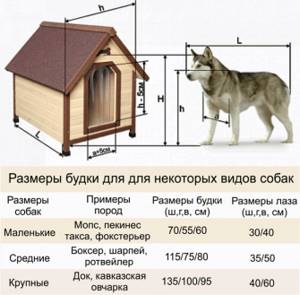
Calculation of dimensions of booth structures
The better to insulate
A worthy owner will one way or another carry out insulation measures, because no one (except the dog itself) can definitely say whether an animal is cold in winter or not. To be sure to create good conditions in which the dog will endure the winter cold and not endanger his health, you need to choose materials for insulating the booth.
Mineral wool
Mineral wool is often used to insulate dog houses.
Styrofoam
A good option that makes it easy to insulate a booth. The thermal insulation characteristics of polystyrene foam are the same as those of mineral wool, and even better. There is no need for waterproofing, since the foam is resistant to environmental factors. It is better to choose penoplex or expanded polystyrene for insulating the booth. Considering that in any case the dog will try to scratch or chew the heat-insulating material, it is also impossible to do without facing work.
Polystyrene foam is an excellent and inexpensive insulation material.
Rolled heat insulators
The most popular are polyethylene and penofol. They can be easily secured to the outside of the booth using a stapler. The material has good thermal insulation properties. As in previous cases, sheathing is required.
Felt
The material is completely natural, which means it is safe for animals. Its price is affordable for anyone. An ideal option for insulating a booth. Considering that it has a good level of vapor permeability and prevents the accumulation of moisture in the booth, waterproofing measures are not required. Using felt, there is no need to resort to cladding; it is enough to secure the material with nails.
Felt can be used to insulate a dog house both inside and outside
It is important! If felt is chosen to insulate the booth, it is recommended to purchase fasteners (nails) with large heads. This will ensure reliable and durable fixation of materials on the kennel.
Among the advantages of a collapsible booth are:
Thermal insulation of an old booth
First, the old booth must be washed and disinfected using products recommended by veterinary services that are not harmful to the health of the animal. Having thoroughly dried the room, insulation and exterior finishing are carried out on top of its facades.
Technoplex 1 cm thick is laid on the base of boards (plywood), polyethylene foam 3 mm thick to eliminate cracks, and on top is an old booth, pressed into the polyethylene with screws, nails, and corners. The booth needs to be upholstered on the sides and top with foamed polyethylene 5-10 mm thick, covered with clapboard walls and a roof with roofing material.
Instructions for insulating the booth
The kennel should be placed on stands made of bricks or blocks. At the installation site, it is advisable to build an air gap by making a 20 cm depression and filling it with expanded clay or gravel. Cover the hole from above using roofing material or polyethylene. If the booth is insulated from the outside, hem a layer of insulation under the insulation.
The choice of insulation option for a doghouse is determined by the design and size of the structure. A house that can be disassembled can be insulated inside or outside; not dismountable, it is more convenient to insulate from the outside. If the kennel is small and after insulation the dog will feel cramped in it, insulation should be carried out from the outside.
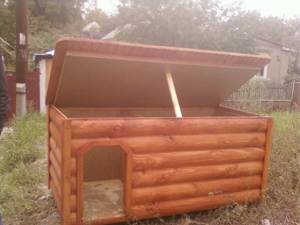
If possible, it is worth making a building with a removable roof and double walls. In the pier, using wooden blocks, a frame is constructed, in which pieces of foam plastic are laid. In the spring you can remove the insulation from the frame.
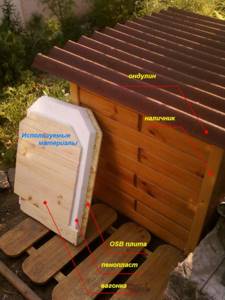
If you need to insulate a finished house, it is better to carry out the work from the outside. Before insulating a dog house for the winter, it should be cleaned and any cracks sealed.
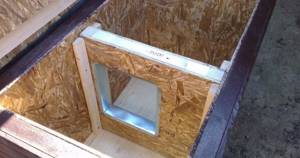
Turn it upside down and treat the surfaces with an antiseptic. Then cover the bottom with a layer of roofing material, attaching it with wooden slats. You can use a sheet of extruded polystyrene foam 50 mm thick.
Turn the structure over and cover the floor on the inside with roofing felt or other waterproofing material, laying it overlapping. Make a sheathing from the bars. Then lay insulation (mineral wool, polystyrene foam, penofol). The foam is cut 3-5 cm larger than the prepared cells so that it fits more tightly.
- Cover the top with boards, plywood, OSB boards.
- Treat internal surfaces with antiseptic impregnation. Lay a layer of waterproofing material, then a layer of insulation. Cover the top with an insulating layer.
- The ceiling is insulated in the same way as the walls, except for the top layer of insulation, which is not necessary.
- If the walls are covered with plywood, it is worth nailing slats around the perimeter to prevent deformation.
- All nails must be well nailed, and the elements and materials of the booth must be securely fastened.
- To decide how to carry out the work, you can watch a video of insulating a dog house.

Methods for installing panel and film heaters
Manufactured heaters can be installed inside the frame of a dog house. A layer of mineral wool is attached to the outer skin, and then a reflective screen. A film or panel heater is attached to it for the dog in the kennel with the working surface towards the inner lining, and then the lining itself is nailed.
The panel heater can be installed on the wall of the booth. For such an installation, you need ordinary self-tapping screws that attach the device directly to the wall.
To reduce energy consumption and easily regulate the heating temperature in the booth, it is advisable to buy a thermostat. To protect the device from the dog's teeth, you need to install a protective metal box with holes.
How to prepare
In order to take care of your pet’s comfort during the cold season, you must follow several rules:
- It is better to make a booth for your pet from natural materials, such as wood. Such a booth does not need to be insulated; wooden walls can retain heat for a long time.
- Before the onset of cold weather, the dog kennel must be washed and treated for ticks. The area around the dog kennel should also be kept clean.
- It is necessary to choose the right size of the booth - it must match the size of the dog so that the pet can warm the home with its breath.
- To keep your doghouse from freezing, you don't need to place it on bare ground. It is better to put it on wooden blocks or several bricks.
- The floor of the kennel needs to be insulated. For these purposes, it is better to use straw rather than a blanket, mattress or shavings. It must be changed at least once a month.
- Dogs are not as afraid of frost as they are of drafts. The entrance should be curtained with thick material, tarpaulin or rubber, that the dog cannot tear. The curtain should be weighted so that it does not flutter in the wind. You can make it yourself, or you can purchase it in specialized stores.
- In order to avoid freezing, the dog must move freely. Therefore, it is extremely undesirable to keep your pet on a chain.
- To maintain optimal temperature, the animal expends a lot of energy, so special attention must be paid to nutrition. It is necessary to increase the calorie content of food, not the frequency of feeding.
Sequence of work
Insulation should start from the floors; you need to protect the bottom of the kennel. A finished floor must be laid on top of the insulation. Next, the walls of the kennel are insulated in accordance with the selected material.
The roof is insulated last; no sheathing is required here.
The roof must be protected from moisture and wind.
There are many ways to insulate a booth’s home and there is absolutely nothing complicated about them. If your faithful pet is dear to you, then it is better to take care of its living conditions, especially during the winter months.
Watch the video in which a specialist explains how to build a warm dog house with your own hands:
The yard dog is constantly on the street. Its health, activity and appearance are very dependent on the conditions of detention. Maintaining the vitality of a pet during the cold season is possible only with proper organization of the temperature regime inside the kennel. Let's look at simple and affordable options for how to insulate a dog house for the winter with your own hands, and also offer the most effective and economical solutions for additional heating of the enclosure.
